My Piano ~ Time for a Tuning
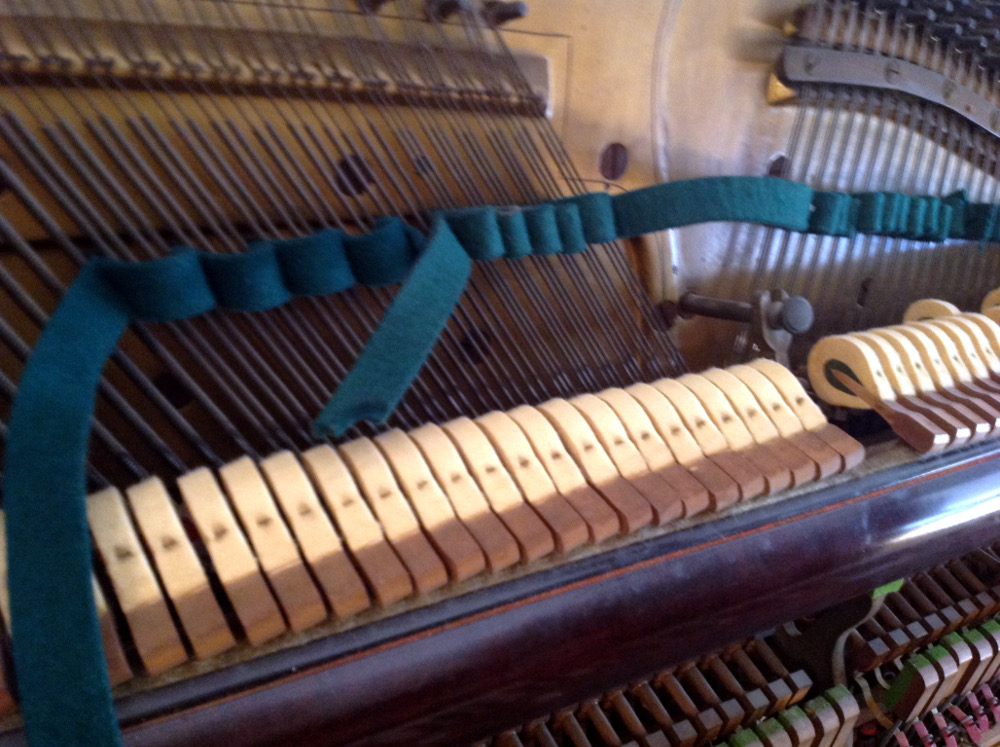
Don't you love peeking inside to see what makes it work? With the yearly change in humidity, one key I often use went wonky on me, and it was time to call Frank, my piano tuner.
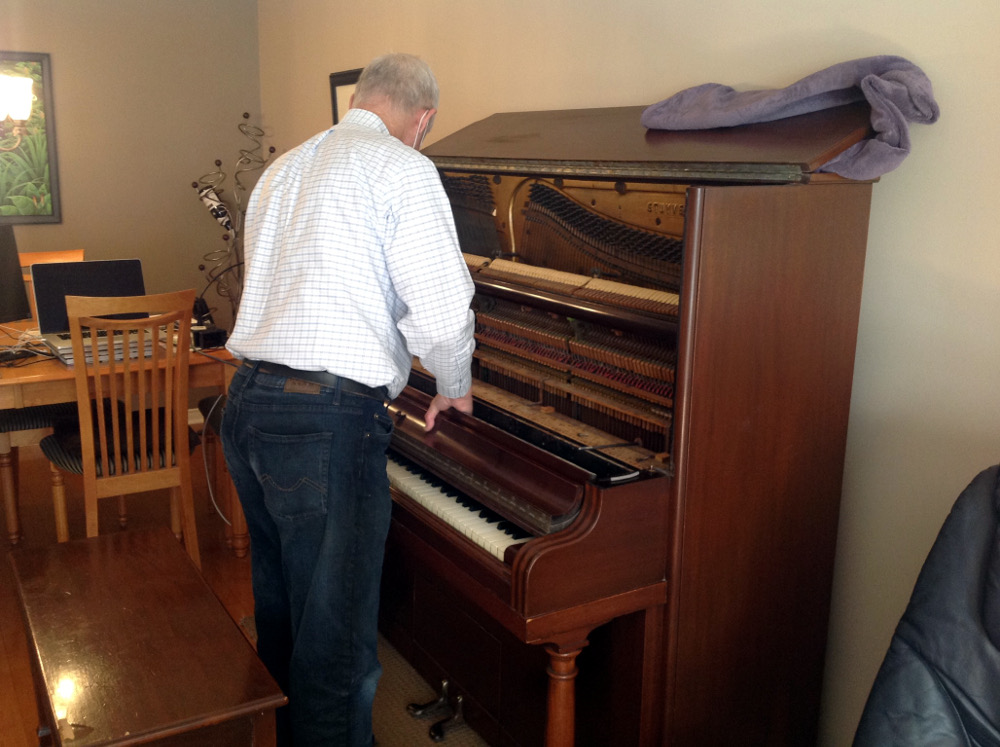
The piano had been missing part of a key for a long time and this time I remembered to mention it ahead of time so we could do something about it. That meant taking more of the piano apart than normal.
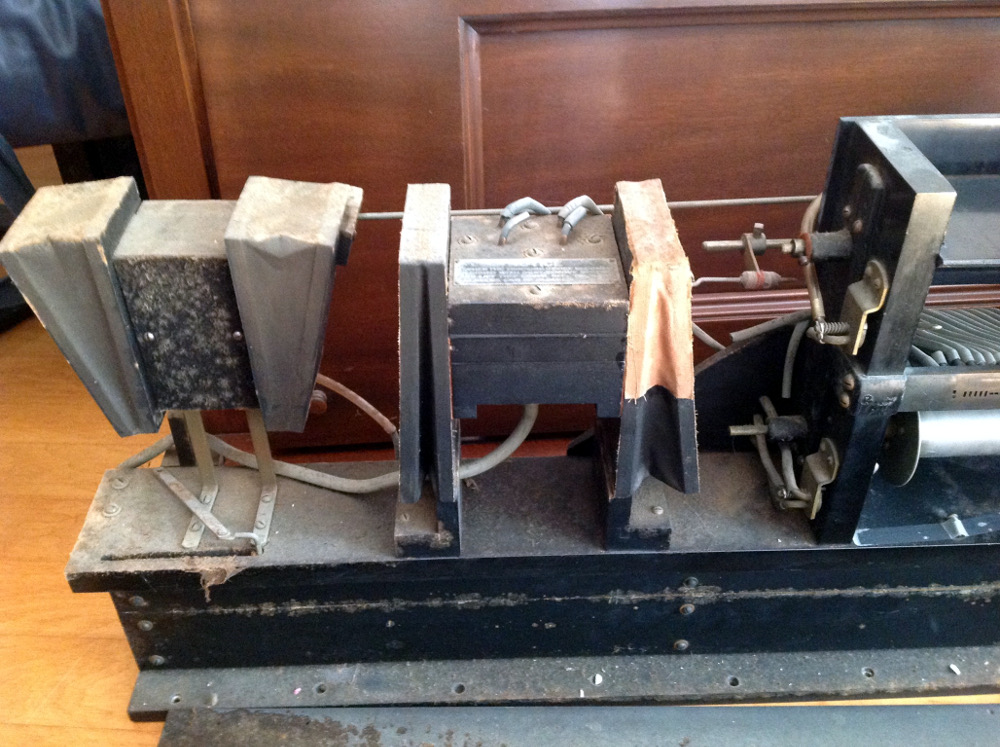
And taking it apart meant removing some of the player mechanism because this is an old player piano. Some people called them pianolas. It's a Stuyvesant 200 P, built in New York City, and a brand that was acquired by Aeolian.
My poor piano had its guts strewn across the living room floor...
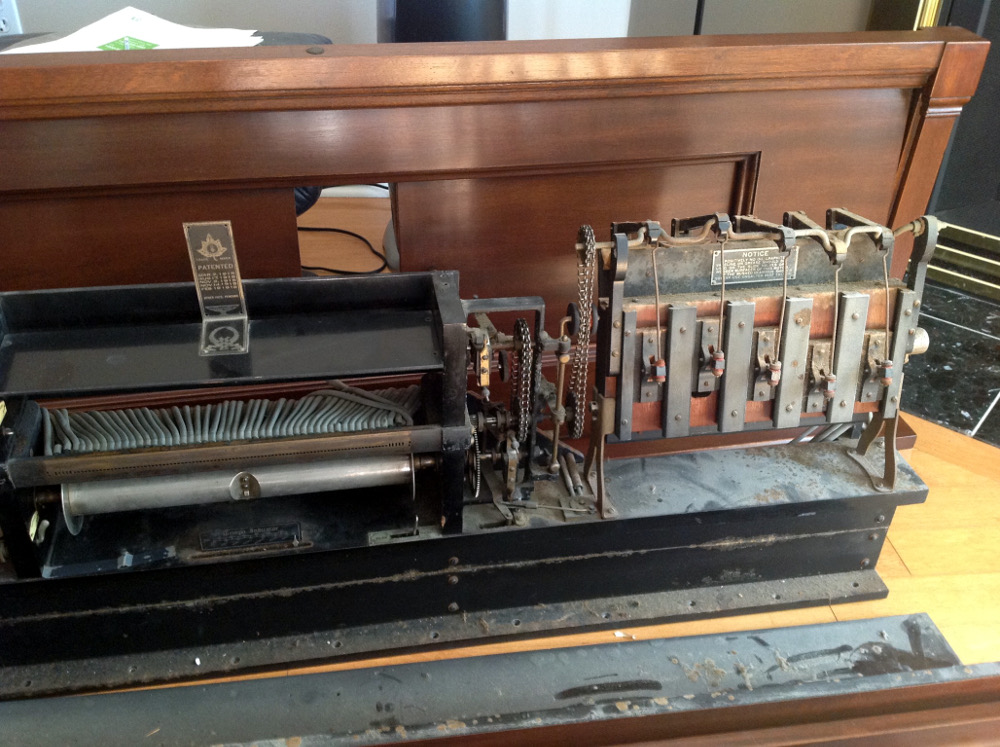
You had to pump the pedals on the older player pianos. The electric ones, like this, must have been electro-mechanical-pneumatic marvels when they first appeared. It's state of the art circa ???? We estimate the piano was manufactured around 1930 because of how advanced it is. During the era of player pianos, which lasted from approximately 1880-1930, there was much innovation in mechanics and almost every player piano Frank sees is different. This one has speed governors and automatically stops at the end of a roll. He calls it the "racehorse" of player pianos.
Unfortunately, all the tubing needs to be restrung before it will play again and that's a $10k restoration job. Maybe when Hive makes us all rich?? There is nothing I would love more than to hear this piano playing any of the hundreds of piano rolls I have in the basement. I remember when it worked, and when I was little, it was like magic!
Still, only the best pianos were turned into player pianos. This one was bought from the original owner and has been in my family since the early 1930s, and it has a wonderful touch and tone.
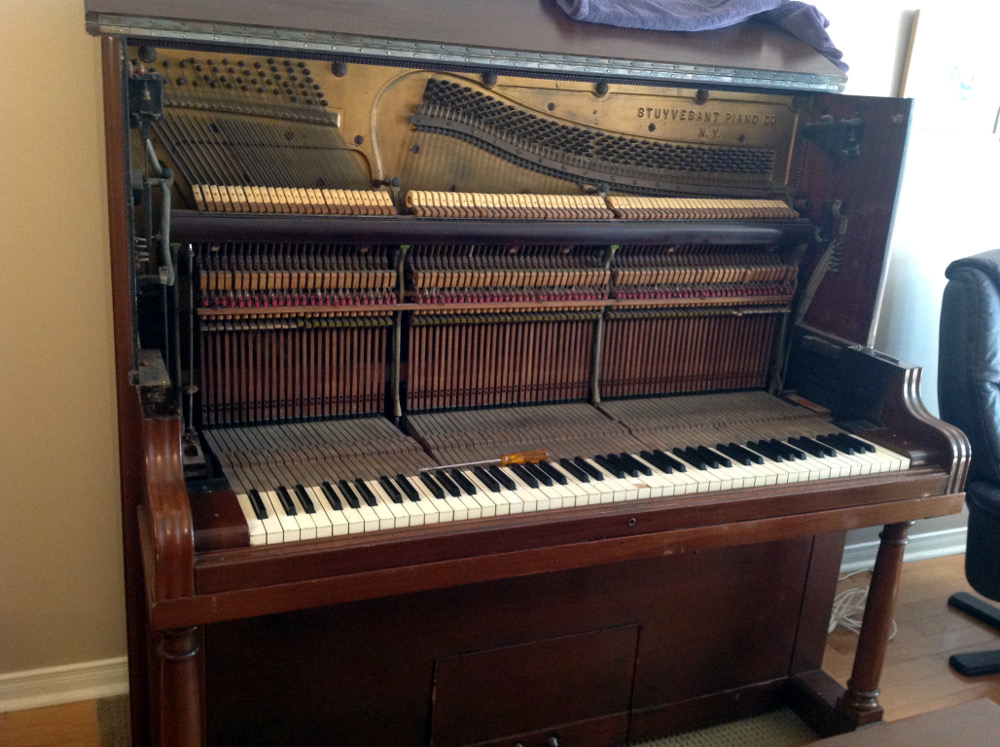
Here it is opened up. It's said that the only time a piano is in tune is when the piano tuner is finished with it, and if you want to define "in tune" then I might agree. I will explain that below. Today, it will be "in tune" and with that half missing key repaired.
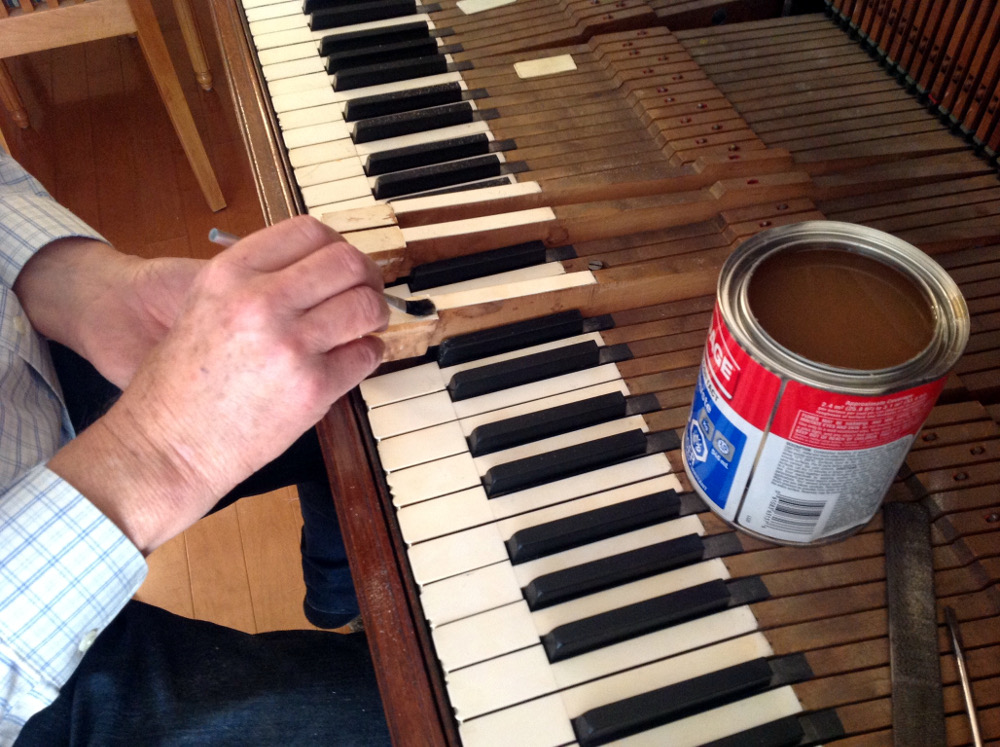
Fixing the keys first. The keys aren't just the black and white part. See how far back they go? And yes, that is ivory. The key was repaired with ivory reclaimed from another old piano and I was not charged for it.

In an acoustic piano, the entire instrument is always under huge stress. There is a wooden soundboard, a metal frame, and strings that are under varying degrees of tension from about 150 to 200 lbs each. Overall, the pressure is easily over 18 tons.
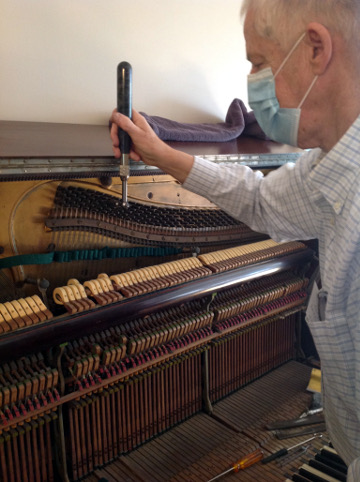
With every tiny change in temperature or humidity, the stresses change. In the spring, the soundboard, which functions like your eardrum, swells and tightens the strings. The pitch goes up, meaning each note gets slightly higher. In the winter, when humidity is lower, it shrinks and causes the strings to loosen. The pitch goes down. The loosening is always greater than the tightening, and on some level, this happens daily. Even under perfect climatically controlled conditions, the strings will gradually slacken over time.
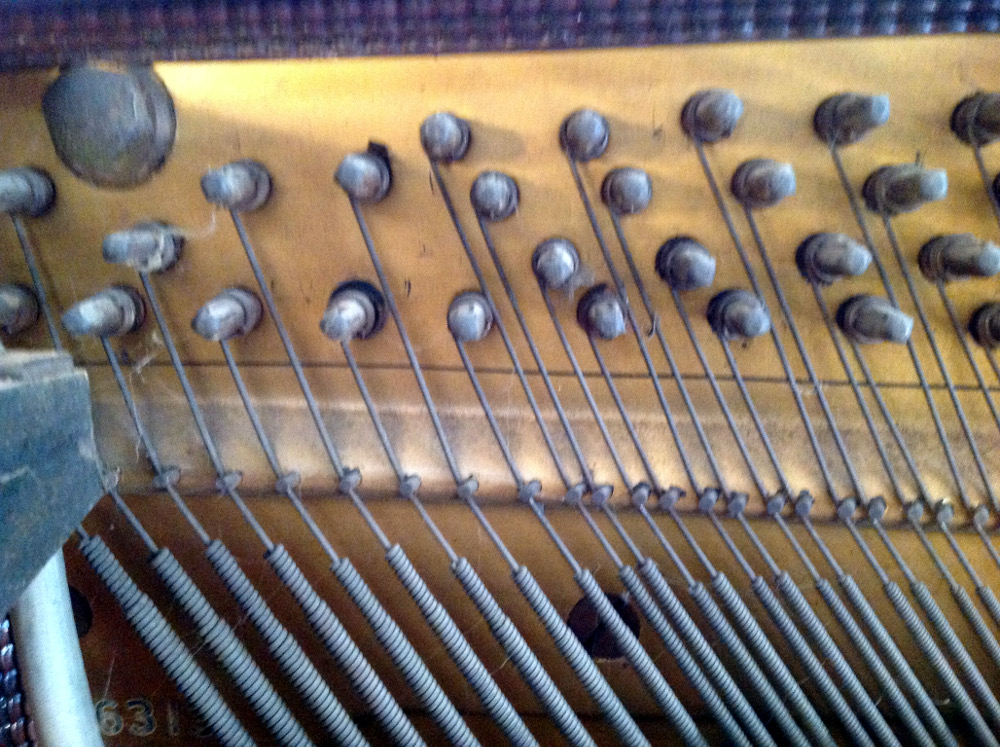
With temperature and humidity extremes come bigger problems. Condensation will cause the strings and metal components to rust. Extreme dryness can cause cracks in the soundboard and even warp the hammers' wood. Press the key attached to a warped hammer and it might miss the string entirely.
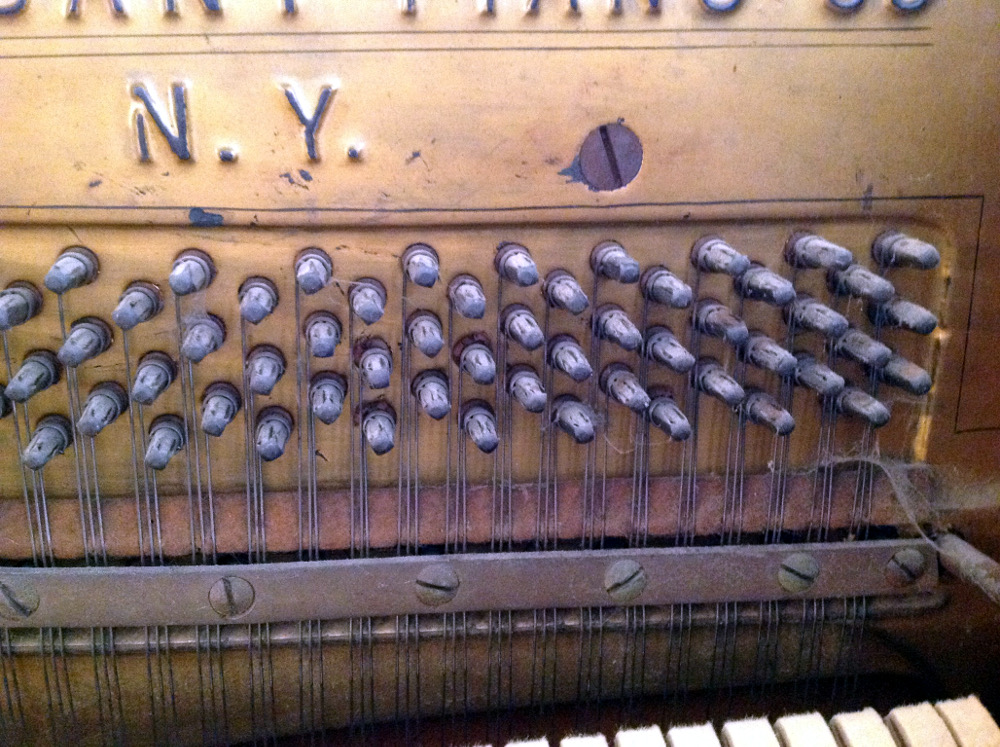
When a piano is brand new, its metal strings are relatively elastic. You tighten them and they loosen on their own, tighten again and they loosen less. It's recommended that new pianos be tuned four times the first year, at least twice the second year, then at least yearly after that whether they are played or not. Those are minimums. It is recommended that good pianos be tuned with every season and certainly a concert pianist would appreciate a more frequent tuning schedule. All of this is just to keep the piano tuned to concert pitch, defined as the A above middle C vibrating to a frequency of 440 Hz.
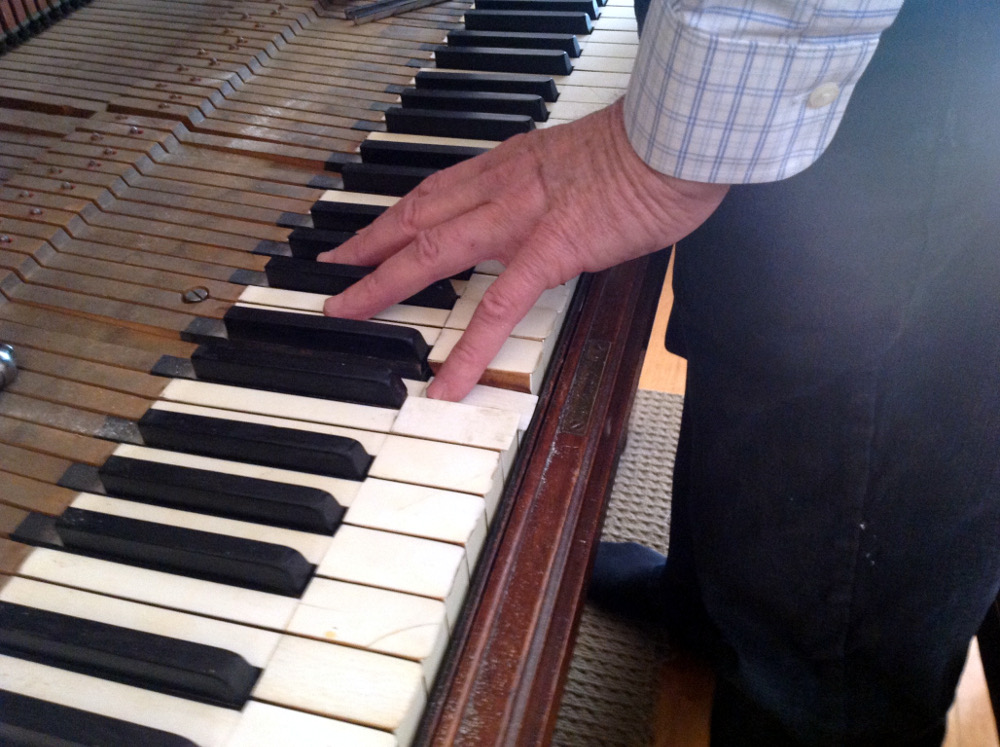
If it hasn't be tuned in years, things get interesting because the strings have continued to slacken, and the overall pitch may have slipped enough that it would be unwise to raise it to concert pitch in one tuning. And this is the situation for this piano.
You don't ever want to break a piano string because a new one would need to be tuned... and it's four times that year, twice the second... I know that guitar players will relate to this but it's worse when you're paying someone else to replace the string and do the tuning for you.
Instead, your tuner will raise the pitch of every string a little each year, and it might take a few years before they are all back to where they should be. Don't worry, even if your piano's pitch is lower than concert pitch it will still sound good. It's only a problem if you're trying to play along with recorded music or other musicians with untunable instruments such as harmonicas and accordians.

Needless to say, tuning is not free but it's cheaper to have yearly maintenance tunings than it is to skip a few years and then have to raise the pitch of every single string on the piano. Even though they loosen, they loosen at different rates and may not all need to be tuned each year.
Incidentally, I have an electronic piano too. I switch back and forth between them but the sound of the acoustic one still isn't 100% reproducible by an electronic piano.
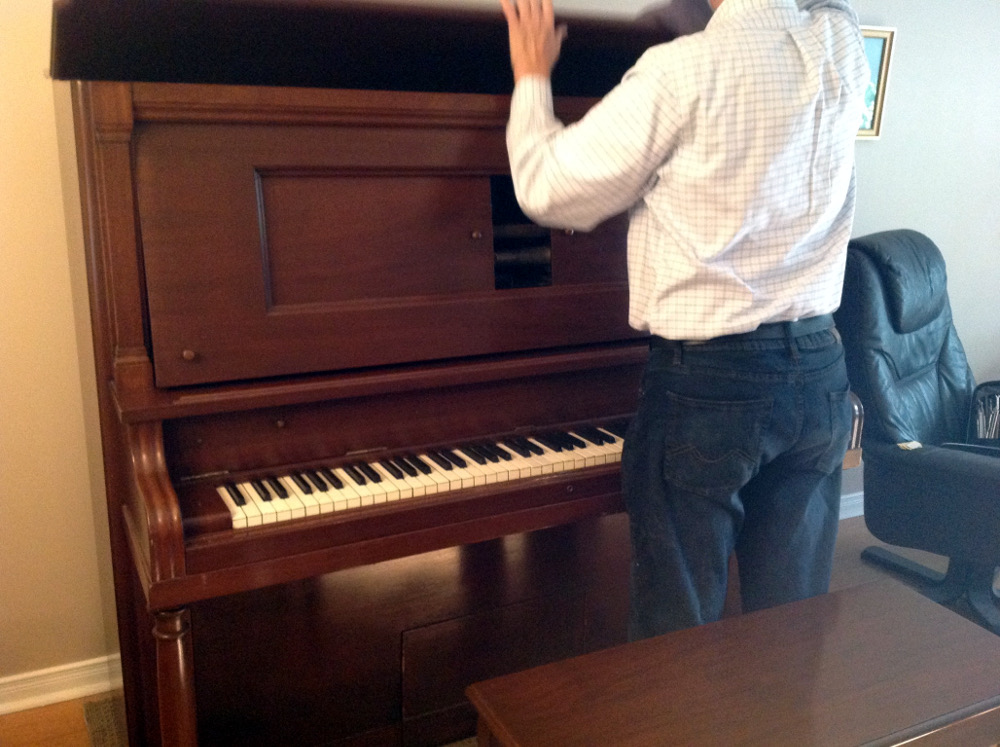
Frank was a good sport through all of this. He's not used to being a model.
I remembered to record the serial number. I want to track down the piano's age and although it's mentioned in the Blue Book of Pianos, there is no serial number look-up for it there, but I saw one elsewhere and I hope I can find it again.
References
Images
Photos from the iPad of @kansuze in Kanata (Ottawa), Canada.

Enjoy!
@kansuze
Interesting post!
I have never seen from the inside :-)